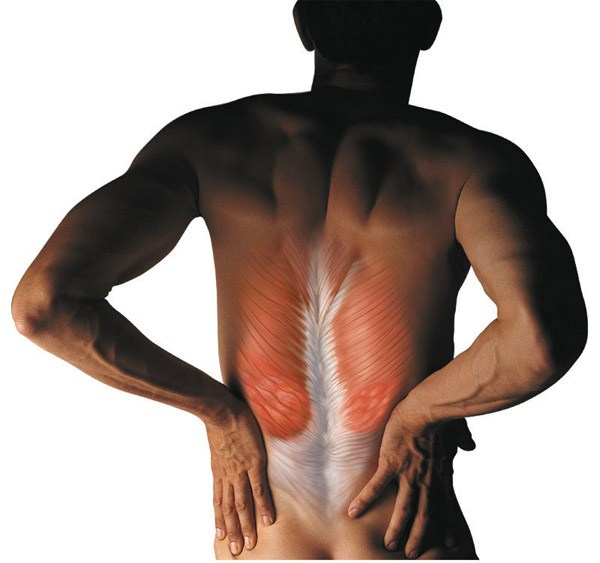Muscle spasms, often referred to as muscle cramps, are involuntary contractions of a muscle or group of muscles. These spasms can range from mild to severe, causing discomfort and sometimes pain. In this article, we will explore the causes, symptoms, and effective treatments for muscle spasms. Whether you’re an athlete or someone experiencing spasms due to medical conditions, understanding the mechanisms behind them can help you find the right treatment and prevent recurrence.

What Are Muscle Spasms?
A muscle spasm is a sudden, involuntary contraction of one or more muscles. These contractions can occur in any muscle group and are often short-lived, but in some cases, they can be prolonged and quite painful. Muscle spasms are common and can affect individuals of all ages and fitness levels. They can occur during physical activity, after exercise, or even while at rest.
Common Muscle Spasm Locations
- Legs: Particularly in the calf muscles, often during or after exercise.
- Back: A common area for spasms due to poor posture or heavy lifting.
- Neck and Shoulders: These spasms are often stress-related and can be exacerbated by prolonged sitting.
- Arms and Hands: Muscle cramps in the arms and hands may occur due to repetitive use or dehydration.
Causes of Muscle Spasms
Muscle spasms can result from a variety of factors, ranging from overuse of muscles to underlying health conditions. Identifying the cause of muscle spasms is crucial for effective treatment and prevention.
1. Dehydration
One of the most common causes of muscle spasms is dehydration. When the body loses excessive water and electrolytes through sweat or insufficient fluid intake, the muscles can become prone to involuntary contractions.
2. Electrolyte Imbalance
Electrolytes such as potassium, magnesium, and calcium are essential for muscle function. Low levels of these minerals in the body can disrupt muscle function and lead to spasms.
3. Overexertion
Excessive physical activity or overexertion of muscles can cause fatigue and lead to spasms. This is often the case for athletes who push their muscles beyond their limits without proper warm-ups or cool-downs.
4. Poor Circulation
Inadequate blood flow to the muscles, which can be caused by poor posture or sitting for long periods, can also contribute to muscle spasms. Proper circulation is necessary for the delivery of oxygen and nutrients to the muscles.
5. Nerve Compression or Injury
Nerve compression, such as from a herniated disc or pinched nerve, can lead to muscle spasms. Injuries or trauma to the muscle fibers can also trigger spasms as part of the body’s protective response.
6. Medical Conditions
Certain medical conditions can make individuals more prone to muscle spasms. These include:
- Diabetes: Neuropathy can lead to muscle spasms.
- Multiple Sclerosis: Muscle spasms may occur due to neurological damage.
- Parkinson’s Disease: Muscle rigidity and spasms are common symptoms.
- Hypothyroidism: A sluggish thyroid can contribute to muscle spasms.
Symptoms of Muscle Spasms
Muscle spasms are typically characterized by the following symptoms:
- Sudden Onset: Spasms usually appear without warning and can be severe.
- Pain or Tightness: A muscle spasm may cause intense pain or a feeling of tightness in the affected area.
- Temporary Deformity: In some cases, the muscle may appear distorted or bunched up during the spasm.
- Limited Movement: The affected muscle may be difficult to move during a spasm.
- Duration: Most spasms last from a few seconds to several minutes.
Types of Muscle Spasms
Not all muscle spasms are the same. They can be classified into different types based on their characteristics and causes.
1. Clonic Spasms
These spasms involve rhythmic, repetitive contractions of the muscles and are typically associated with neurological conditions like epilepsy.
2. Tonic Spasms
Tonic spasms involve sustained contractions of the muscle and are often painful. These can occur in response to injury or muscle strain.
3. Nocturnal Leg Cramps
These spasms occur during the night, typically in the calf muscles, and can disrupt sleep. They are common in older adults.
4. Heat Cramps
Heat cramps are muscle spasms that occur during or after intense physical activity in hot conditions, often due to dehydration and electrolyte imbalances.
Treatment and Relief for Muscle Spasms
While muscle spasms can be painful, there are several treatment options and strategies that can help provide relief.
1. Stretching and Massage
Gently stretching the affected muscle can help relieve the spasm. A light massage of the muscle can also promote relaxation and reduce tension.
2. Hydration
Ensuring adequate hydration is crucial in preventing and relieving muscle spasms. Drinking water and electrolyte-rich drinks (such as sports drinks) can restore lost fluids and minerals.
3. Heat or Cold Therapy
Applying heat to the affected muscle can promote blood flow and help relax tight muscles. On the other hand, cold therapy (such as an ice pack) may reduce inflammation and numb the pain.
4. Over-the-Counter Pain Relief
Nonsteroidal anti-inflammatory drugs (NSAIDs) like ibuprofen can help reduce inflammation and alleviate pain associated with muscle spasms.
5. Physical Therapy
If muscle spasms are frequent or chronic, physical therapy can help improve flexibility, strength, and posture. A physical therapist can also suggest specific exercises to prevent muscle spasms.
6. Muscle Relaxants
In severe cases, a healthcare provider may prescribe muscle relaxants to reduce the intensity and frequency of muscle spasms.
7. Electrolyte Replacement
For individuals suffering from spasms caused by electrolyte imbalances, taking supplements of magnesium, potassium, or calcium can help restore proper muscle function.
Prevention of Muscle Spasms
While muscle spasms are sometimes unavoidable, there are steps you can take to reduce the risk of experiencing them.
1. Regular Exercise
Maintaining an active lifestyle with regular exercise helps improve muscle flexibility and strength, reducing the risk of spasms.
2. Proper Warm-Up and Cool-Down
Always warm up before exercising and cool down afterward. Stretching helps prepare muscles for activity and promotes recovery afterward.
3. Adequate Hydration
Drink plenty of water before, during, and after exercise, especially in hot weather. Consider electrolyte drinks to replenish lost minerals.
4. Balanced Diet
Eating a balanced diet that includes foods rich in magnesium, potassium, and calcium can support muscle health and prevent cramps.
5. Good Posture
Maintaining proper posture, particularly when sitting or standing for extended periods, can help improve circulation and reduce the likelihood of muscle spasms.
When to See a Doctor
In most cases, muscle spasms are not a cause for concern. However, you should consult a healthcare professional if:
- The spasms are severe or frequent.
- You experience muscle weakness or numbness.
- The spasms are accompanied by swelling or redness.
- There is a history of neurological or metabolic conditions that may be contributing to the spasms.
Muscle spasms can range from a mild nuisance to a debilitating condition. Understanding the causes, symptoms, and effective treatments for muscle spasms is key to managing them and preventing their recurrence. By maintaining proper hydration, incorporating stretching into your routine, and addressing underlying health conditions, you can minimize the impact of muscle spasms on your daily life. If spasms persist or worsen, it is essential to seek medical advice to rule out more serious underlying causes.

